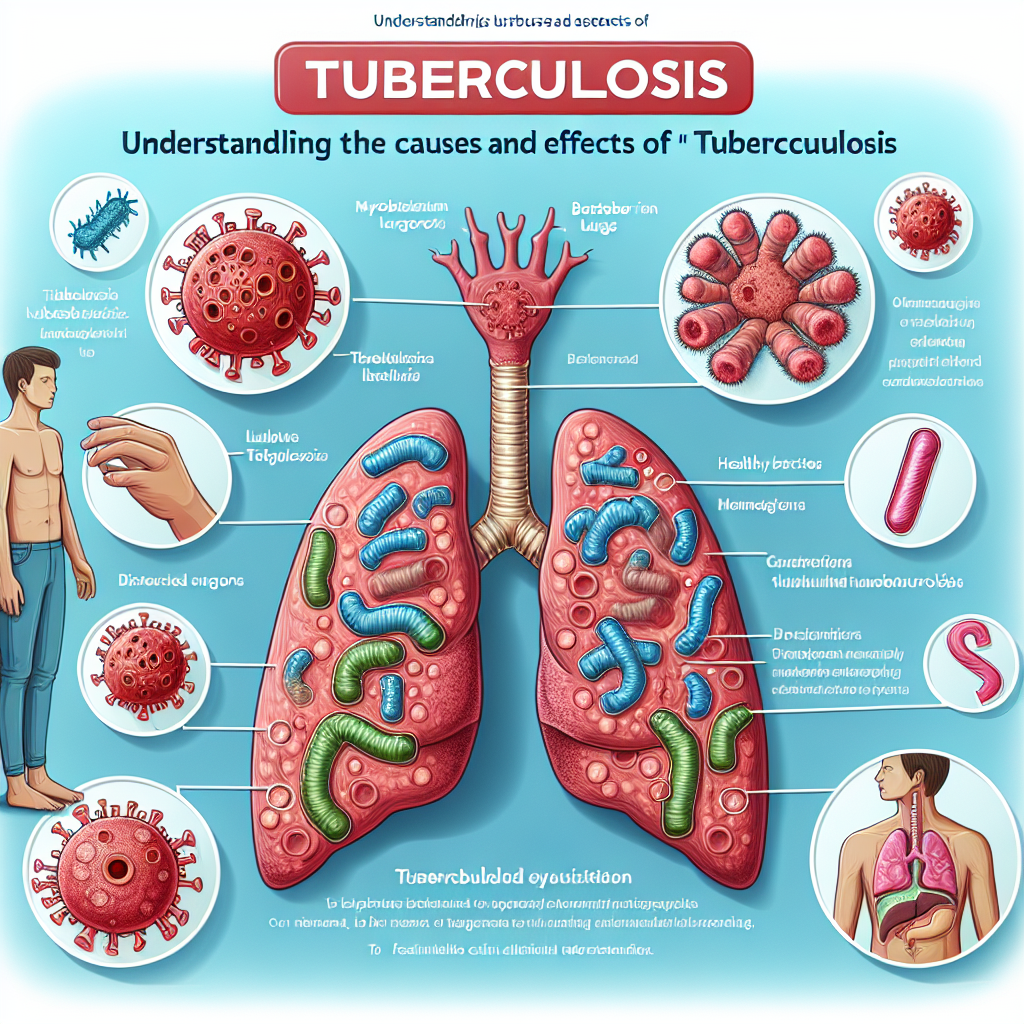Tuberculosis, commonly known as TB, remains one of the world’s deadliest infectious killers. While global efforts to curb its impacts have saved millions of lives over the last few decades, many people still lack access to preventative treatment and suffer from a lack of understanding about what causes this disease and its effects. Gaining insight into the causes and effects of TB is the first step towards a TB-free world.
The Causes of Tuberculosis
TB is caused by the bacterium Mycobacterium tuberculosis. This germ is spread through the air and can be contracted by breathing in microscopic droplets containing the bacteria. The most common route of transmission is from person to person, typically when someone with active TB coughs, sneezes, talks or sings.
Although TB is contagious, it’s not easily caught. You’re far more likely to contract TB from someone you live with or work with than from a stranger. Most people with active TB who’ve had appropriate drug treatment for at least 2 weeks are no longer contagious.
Latent and Active Tuberculosis
Once the Mycobacterium tuberculosis bacterium enters a person’s body, it can either cause latent TB infection or active TB disease. People with latent TB aren’t sick and have no symptoms because the body’s immune system acts to protect them from the bacteria. They cannot spread TB bacteria to others but could develop active TB disease if their immune system weakens.
If left untreated, latent TB can transition to active TB, which can cause damage to the lungs, bones, brain, kidneys, and the spine. The symptoms of active TB can include a persistent cough, fatigue, weight loss, fever, and night sweats.
The Effects of Tuberculosis
Tuberculosis primarily affects the lungs, but it can also spread and cause secondary infections throughout the body. Without treatment, TB can be fatal. Persistent cough, chest pain, and coughing up blood are some symptoms that indicate tuberculosis in the lungs. If it affects the kidneys, symptoms can include blood in the urine. In the spine, it can cause back pain, and in the brain, it can result in headaches, nausea, and even coma.
Although TB is curable and its treatment available at low cost, the effects of TB infection can be long-lasting, and severe cases can result in lasting damage to the lungs. This damage can cause long-term breathing difficulties, respiratory failure, and can even be fatal if left untreated.
The effects of tuberculosis extend beyond the individual. It can contribute to the cycle of poverty, and those affected often suffer social stigma and marginalization. These socioeconomic factors, in turn, hinder the control of TB.
Conclusion
Understanding the causes and effects of TB is crucial in combating this deadly disease. Despite significant strides in recent years, TB continues to be a global health crisis, demanding urgent attention and public awareness. Early diagnosis and appropriate treatment are key to preventing the spread and effects of this disease. Further, strengthening healthcare systems and addressing social factors such as poverty, will be crucial for a TB-free future.
FAQs about Tuberculosis
- Is TB preventable or curable?
Yes, TB is both preventable and curable. Vaccines are available to prevent TB, and treatment usually involves a course of antibiotics taken over several months. - Can I become infected with TB by touching someone?
TB is not spread by touching an infected person. It is spread through the air when a person with TB of the lungs or throat coughs, sneezes, or talks. - Who is at risk for TB?
Anyone can get TB, but certain people are at high risk, including people infected with HIV, people who have been in close contact with a person with infectious TB disease, and those who have weakened immune systems. - What are the symptoms of TB?
Common symptoms of TB include a persistent cough that lasts more than three weeks, chest pain, coughing up blood, fatigue, weight loss, fever, and night sweats. - Why is TB still a problem in the 21st century?
Despite available prevention and cure, TB continues to be a significant health issue due to factors like insufficient understanding and awareness about the disease, stigma and discrimination, and weakness in health services.

Leave a Reply